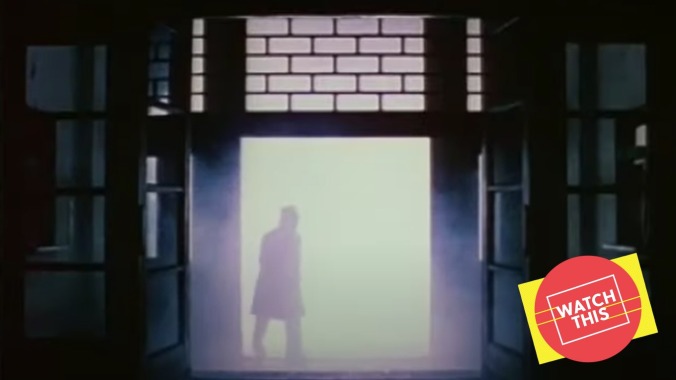Purgatory is as drab as the DMV in the profound and moving After Life

Watch This offers movie recommendations inspired by new releases, premieres, current events, or occasionally just our own inscrutable whims. This week: Pixar’s Soul was supposed to hit theaters. In its absence, we’re looking back on other cinematic depictions of the afterlife.
After Life (1998)
What if the afterlife was as mundanely bureaucratic as, well, life? It’s a funny idea but also maybe a reassuring one. For as much we all collectively bemoan the hassles of, say, customs or the DMV, envisioning the passage from death into whatever’s next as a fundamentally orderly experience—governed by familiar rules and procedures—does take some of the scary mystery out of it. Which is maybe why everyone from Albert Brooks and Tim Burton to Pixar and Michael Schur has wrapped the great beyond in red tape.
Few, however, have managed to create a purgatory quite as drably ordinary as the one depicted in After Life, an early effort from Japanese director Kore-eda Hirokazu. The film takes place almost entirely within a nondescript administrative building that, as we quickly discover, is actually a way station between life and death. Upon arrival, the recently deceased have one week to select a single memory from their life to carry with them into heaven and relive for all of eternity. Helping them with this rather daunting task is a team of celestial functionaries—normal people, by all appearances, who approach the job with a mixture of compassion, professional distance, and exhaustion one might encounter in the average social worker. The movie opens with two staffers on their way to the Monday morning meeting, discussing a “client” who spent the previous week recounting his sexual exploits, before settling—as the horndogs often do, we’re told—on a sappier cherished memory.
The premise is irresistible, and Kore-eda strikes an unlikely balance between breezy and profound: Though grazing timeless, endlessly debated topics like the meaning of existence and the key to true happiness, After Life wears its philosophical aspirations lightly. Much of the film consists of interviews with the transitioning guests (played by a mixture of professional and nonprofessional actors, all believable as “normal” people) as they recount significant experiences from their lives, not all of them momentous by any conventional definition. In some respects, the movie is a thought exercise, encouraging viewers to examine which of their own memories they cherish most. Which isn’t to say there’s no drama here; the plot ends up concerning a kind of unlikely love triangle involving one of the case workers (Kore-eda regular Arata Iura) and an elderly client agonizing over which moment from a generally, vaguely unsatisfying life he’d want to forever revisit. This storyline is resolved on a movingly romantic note, suggesting that our individual lives can intersect in resonant ways, and that there’s a beauty in providing happiness for someone else, even when our own isn’t dependent on them.
After Life eventually becomes a meditation on moviemaking itself. One of the quirks of the afterlife system the film presents is that the team has to shoot and project movies of the selected memories in order to complete the process—an element of the plot that speaks to both cinema’s value as an imperfect but meaningful tool for immortalizing experience and to the way memory itself is imperfect, a movie in our heads that doesn’t necessary capture the reality of what we’re recalling. Kore-eda, whose last film won the coveted Palme D’Or at Cannes and whose most recent is getting a digital release next month, can be sweetly humanistic to a fault; he’s made movies that seem in danger of blowing away on a light breeze. But in After Life, the gentle simplicity of his approach yields powerful rewards—it’s the perfect match for a graceful navigation of life’s biggest questions. In the end, Kore-eda’s very unglamorous conception of the afterlife feels like a reflection of his notions about memory—his convincing assertion that it’s not always the big, eventful moments that imprint themselves most vividly on our minds. Sometimes, the small ones can stick with us longer and better. That can be true of movies, too.
Availability: Though After Life is out-of-print on DVD and bafflingly unavailable to stream or rent from the major services, it is currently on YouTube.